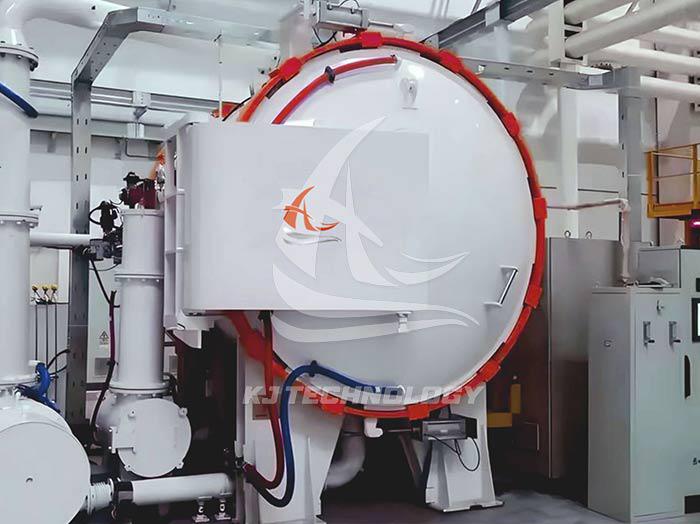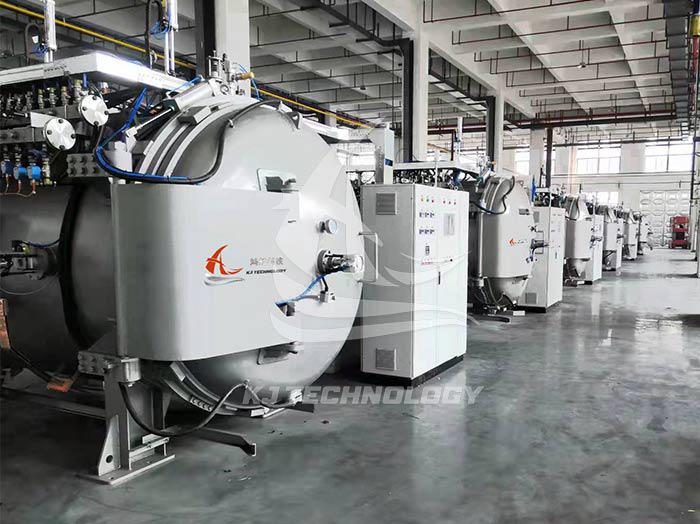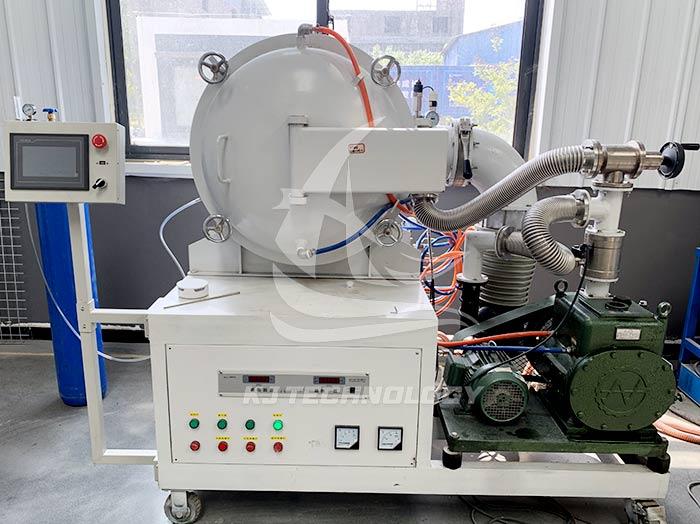High temperature vacuum brazing furnace
 11-20-2025 Author: KJ technology
11-20-2025 Author: KJ technology
High temperature vacuum brazing furnace is a key equipment for achieving precise material connection in a high-temperature vacuum environment. Its core functions, technical characteristics, application fields, and operating specifications are as follows:
1. Core functions and technical features
High vacuum environment
Ultimate vacuum degree: up to 6.0 × 10-3Pa or even higher (such as 6.67 × 10-4Pa), effectively isolating oxygen, preventing material oxidation, and improving welding quality.
Vacuum system: equipped with three-level vacuum units (diffusion pump+Roots pump+mechanical pump), combined with high reliability pneumatic baffle valves and automatic temperature control diffusion pumps, to ensure rapid vacuum pumping and maintain a stable vacuum environment.
High temperature control
Temperature range: The working temperature covers 100 ℃ to 2300 ℃, meeting the welding requirements of materials such as aluminum, copper, nickel, stainless steel, and high-temperature alloys.
Temperature control accuracy: ± 1 ℃, temperature uniformity within ± 5 ℃ is achieved through PID algorithm and multi-point temperature measurement technology, ensuring welding sensitivity temperature requirements.
modular design
Structural composition: including furnace body, heating chamber, vacuum system, air cooling system, inflation system, partial pressure system, water cooling system, and electrical control system.
Heating chamber: adopting a cylindrical design, consisting of graphite felt insulation screen and graphite tube heating elements (triangular connection), providing a uniform thermal field.
2. Typical application scenarios
aerospace
Single crystal alloy blades: Precise connection of high-temperature alloy blades is achieved through transition liquid phase diffusion welding (TLP) to enhance engine performance.
Titanium alloy structural components: Welding titanium alloy in a vacuum environment to avoid oxidation and maintain material biocompatibility.
automobile manufacturing
Heat exchanger and cooler: vacuum brazed aluminum alloy heat exchanger, EGR cooler, improve heat conduction efficiency and prevent corrosion.
Heterogeneous metal connection: such as welding aluminum and copper, to solve the electrochemical corrosion problem in traditional processes.
Electronics and Semiconductors
Vacuum switch tube: In the sealing process, a vacuum environment is used to prevent arc oxidation and improve equipment reliability.
Microwave Magnetron: Welding high-frequency components to ensure signal transmission stability.
Tool manufacturing
PCD diamond cutting tools: Vacuum brazed hard alloy cutting body and diamond cutting head to improve tool wear resistance and cutting accuracy.
3. Operating standards and safety points
Preparation before opening the furnace
Check water, electricity, and gas: voltage, air pressure, water pressure.
Cleaning the heating chamber: Remove debris and oil stains to ensure that the workpiece is dry and free of water stains.
Vacuum pumping and heating
Staged pumping: Start the mechanical pump and coarse pumping valve first, wait for the diffusion pump to preheat for 90 minutes, and then switch to the high vacuum valve.
Vacuum degree monitoring: When the vacuum degree reaches below 10Pa, start the heating program and raise the temperature according to the preset curve.
Cooling and Sampling
Natural cooling: After the process is completed, close the high vacuum valve and diffusion pump, keep the mechanical pump pumping vacuum, and open the furnace door when the furnace temperature drops below 120 ℃.
Forced cooling: Fill nitrogen or argon gas to atmospheric pressure, start the fan to accelerate cooling, and take samples after the temperature drops below 50 ℃.
safety protection
Emergency stop: In case of abnormal situation, immediately press the "emergency stop" button, and the safety valve will automatically release pressure.
Sealing ring maintenance: Regularly clean the furnace door sealing ring with alcohol to prevent air leakage.
4. Selection suggestions
According to material requirements
High temperature alloys: Choose models with ultimate vacuum degree ≤ 10-4Pa and maximum temperature ≥ 1600 ℃.
Aluminum alloy: equipment with priority temperature control accuracy of ± 1 ℃ and temperature uniformity of ± 5 ℃.
By process scale
Small batch production: Select a compact furnace body with an effective heating zone of Φ 200 × 200mm. Mass production: Customized heating zone size, equipped with automated loading and unloading system.








